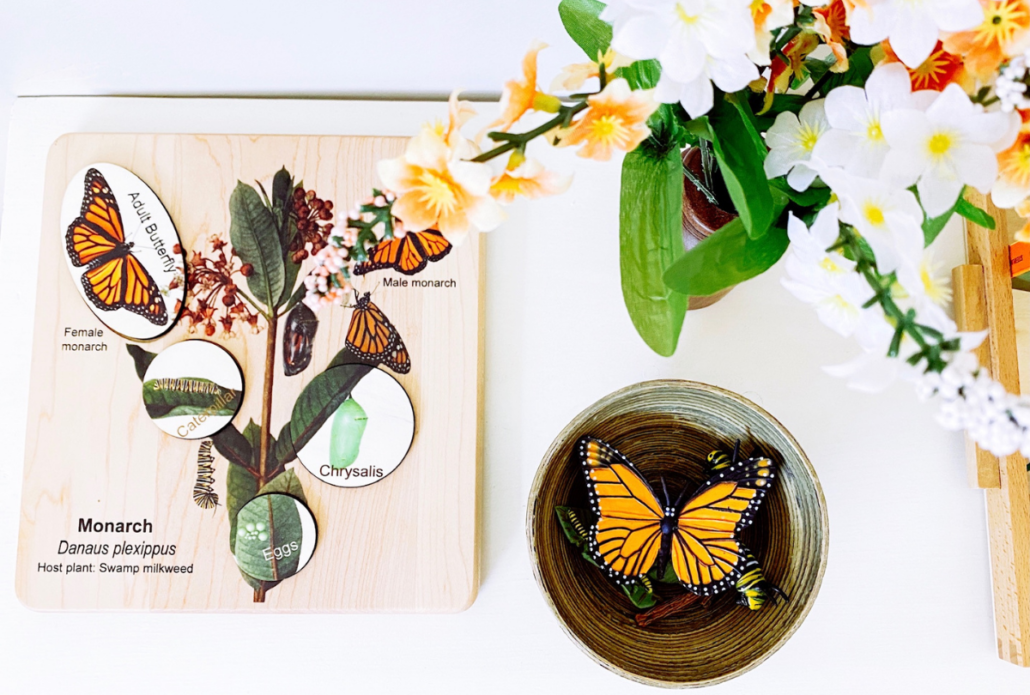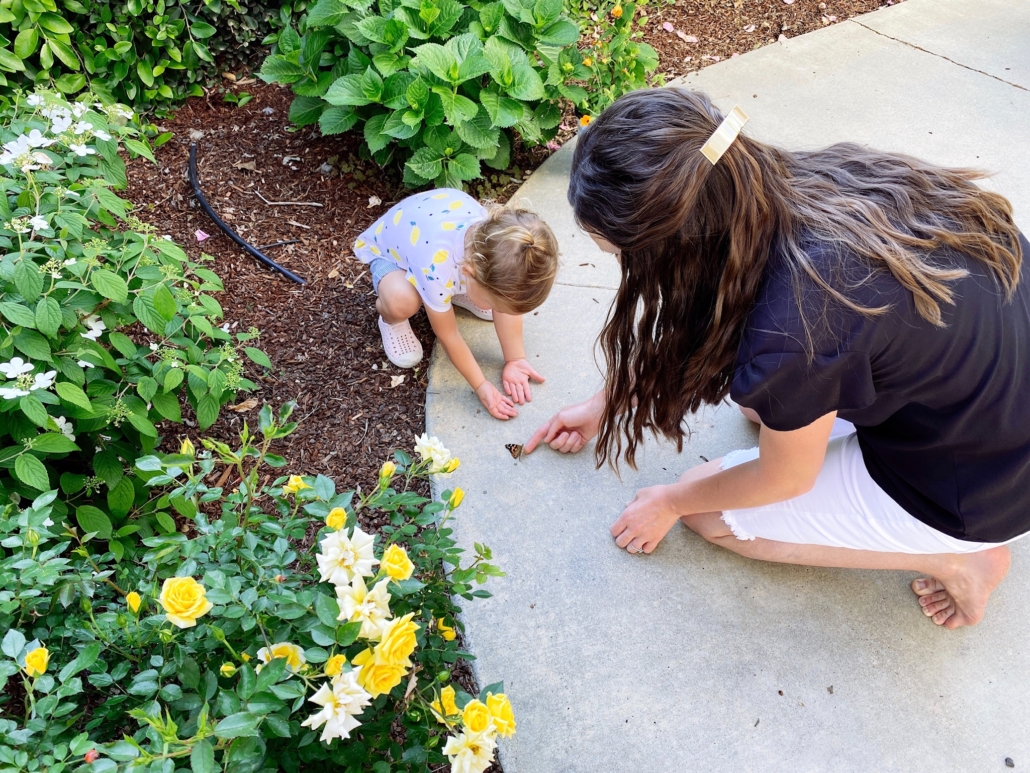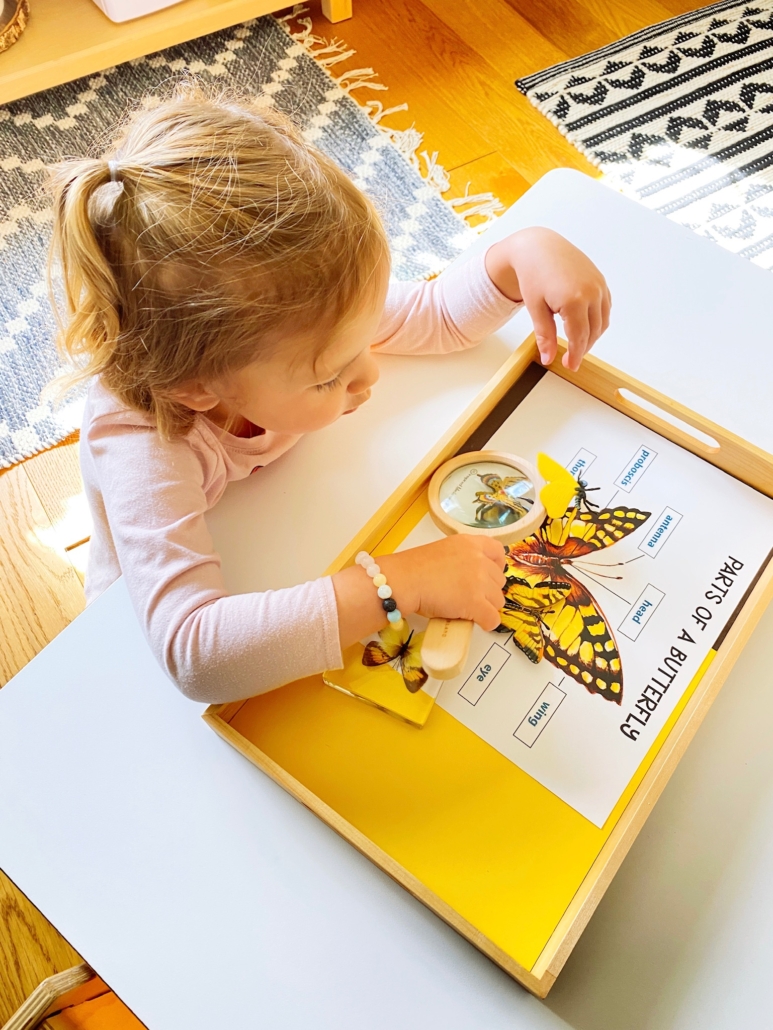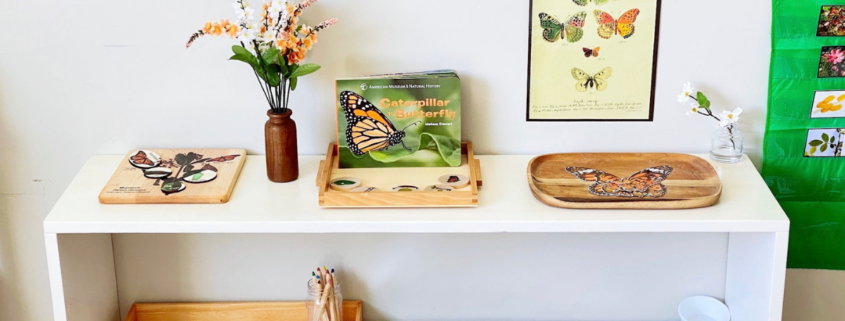How to Present Shelf Work
How to Present Shelf Work
We are often asked, “So now that I’ve set up shelf work for my child, how do I get them to use it and clean it up?” As you all know or are learning, there are many facets to a Montessori environment and mindset. There are so many important details that go into preparing an environment for your child as you set them up for success. Knowing when and how to introduce and present materials is a very important step in creating a flow in your child’s Montessori spaces.

Keep in mind that sometimes we set up work for a child and because of the intricacy or challenge to the child it will need a lesson. Other times we set up work for a child and just wait to see if he/she notices it and chooses to explore with it. Both are correct and both are necessary. Even after giving a lesson to a child on something like preparing a snack of crackers and jelly, we leave them to work and explore the activity on their own so that they begin to draw conclusions and understandings.
Here is how we present work in our school and in our homes allowing for as much freedom and exploration within limits that we can. Remember that solid boundaries and gentle reminders are a big part of setting your child up for success, too!
Presenting Shelf Work (How to’s and What to’s)
- Always start with an invitation:
•“Would you like me to show you this work today? Or I have a work to show you, would you like to see it?” or
•Your invitation can be simply laying a work out on the table or the shelf and see if your child gravitates towards it.
If your child answers “yes” to your invitation, then proceed with the following steps:
- Lay a mat to define space.
- Demonstrate how to take the work from the shelf to the table or floor.
- Show your child with as few words as possible how to work with the material.
- Demonstrate how to clean up the work and return it to the shelf.
- Return the mat to its correct place.
- Invite your child to try the work.
- Ask: Would you like to do this? If the answer is “Yes.”
- Allow your child to explore the work.
- Before your child moves on to the next work, encourage and remind him/her to put the work back where it goes.

Important Reminders
- Remember when giving the lesson or introducing the shelf work to say as few words as possible. Let your deliberate movement be the teacher, not your voice. If your child seems a little squirmy or maybe not totally paying attention, you can say, “Watch this” or “Look at this.” Remember to do it with quiet excitement, not as a command.
- We have found when we draw back attention to a task with peaceful excitement, it brings the child into the presentation. If this doesn’t work, then you will need to determine if maybe your child isn’t really interested in the work or isn’t quite ready to receive it yet. If this is the case, you can suggest they choose something else or ask if they would like to see this work later. Then gently clean up and move on to something else.
- If a child refuses to put his/her work away whether following a lesson or at any time during the day, simply state, “I’ll do it this time and maybe next time you will want to do it yourself” or “Watch how I do this.” They might watch and even start helping, but either way, don’t make a big deal or try to get them to help or watch, just invite.
- Finish the clean up and quickly move on to the next activity. By doing this, you will avoid power struggles which can come naturally for this age group as they are growing in independence. It also allows you to be an example of how something should be put away or be cared for. Our experience has shown us in classroom and home environments that after doing this a few times, the child begins to understand that cleaning up and restoring work is part of the daily routine.
Take Time to Observe
When your child is engaged in work or play remember that observation is the key! Try not to intervene unless your child is being unsafe with the work (such as throwing it)otherwise, just watch! Take note of:
- Your child’s interests
- Are there certain things that your child gravitates to? Seems to favor? Doesn’t like or doesn’t show interest in?
- How does he/she choose to use the material?
- How well does he/she follow the set up and clean up steps?
- Did they remember where to return the materials or how to prep them for the next time?
- How much time was spent exploring the work or materials?
- Did the material seem too easy? Too difficult?
- Are your areas and materials prepared in a way that allows your child to be independent and find success?
These are important notations and can help you plan further shelf work or maybe change up your shelf work presentations.
Try these steps and let us know how it goes! We would love to hear your experiences with preparing and presenting work to your child and we are happy to answer your questions!

